California Native Plants for Containers
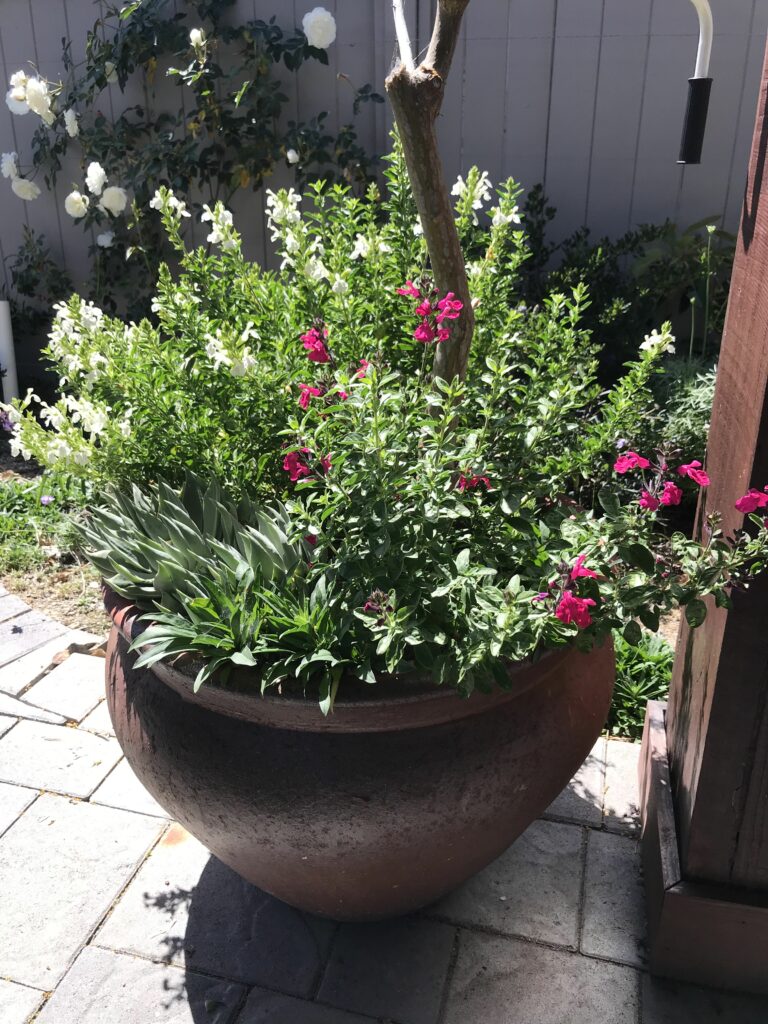
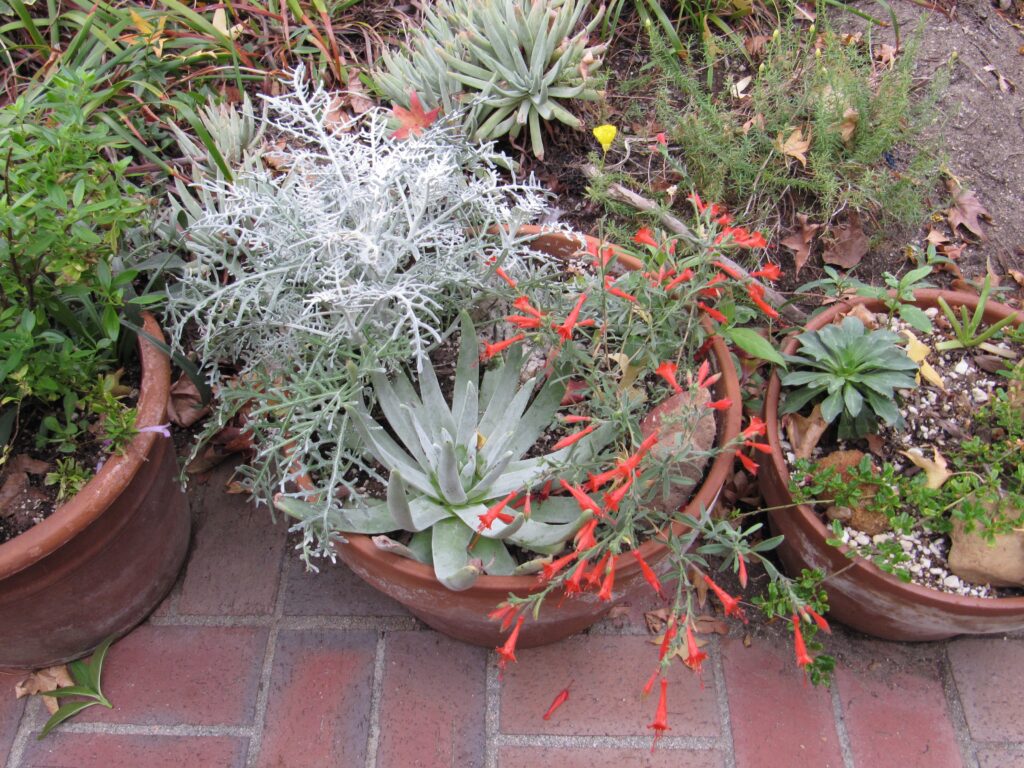
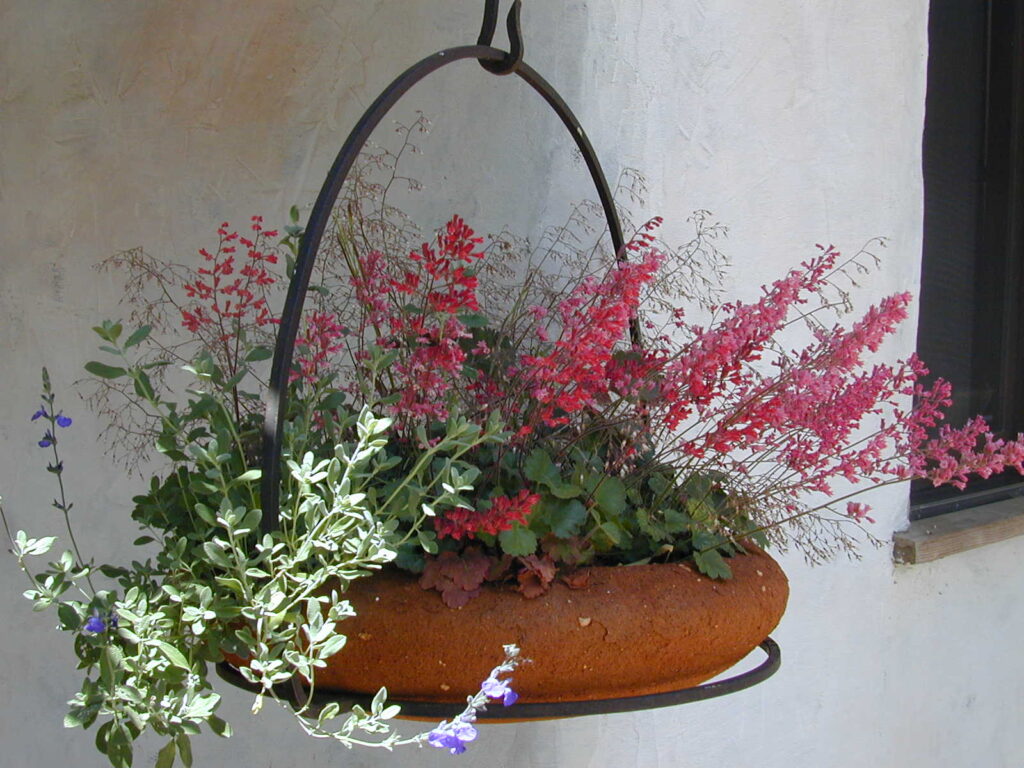
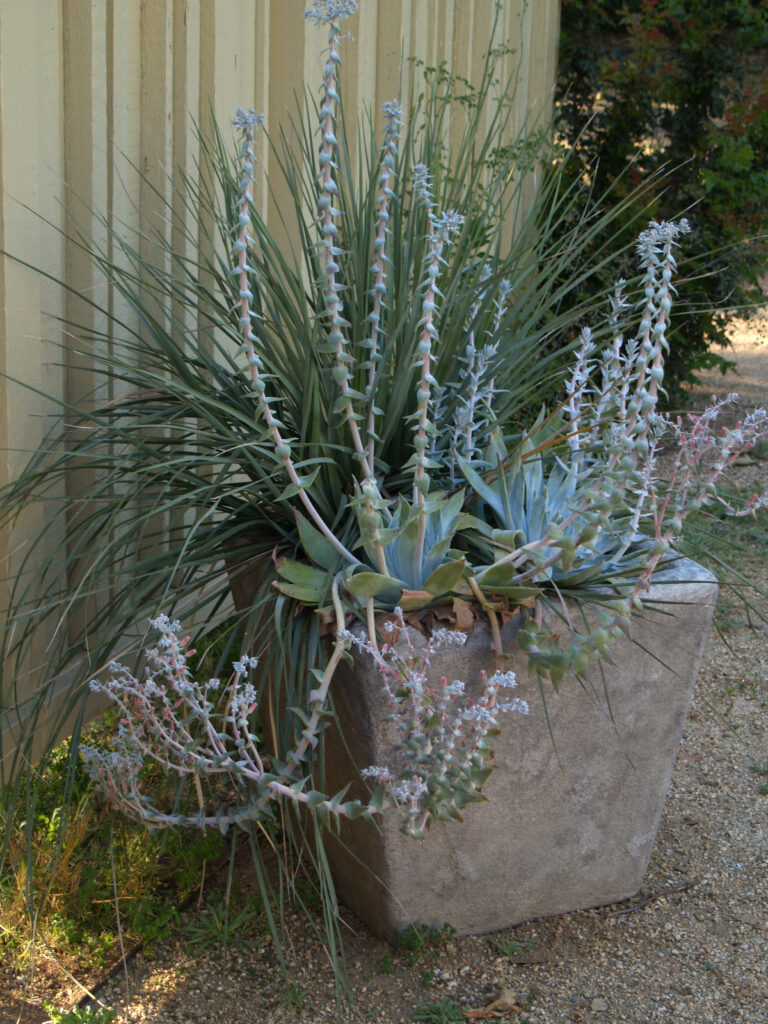
How could you expect to see nature in miniature? You can’t stick her in a box nor define her with set boundaries. Nature is big. The great landscape paintings and famous nature photographs even fall short, limited by their frames. That’s why we need an imagination.
Can you get a whole ecosystem to fit on your patio? You can if you use your imagination and a little creativity. The art form of “bonsai” puts all the grandeur of an ancient tree or forest into a special pot on a special stand. If you sit there just a few feet away, viewing and contemplating, you will find yourself transported to a full-scale forest, or lying under a giant pine on some distant mountain. Nature in miniature can be good for you. The Japanese people discovered this a long time ago. Is this why we keep rocks and twigs on our desk, a pinecone, a “Nature” calendar, a few dried flowers?
We tend to bring little scraps into our world in order to stay connected. We can do it with live plants as well… nature in miniature. Here’s how……….
Diversity
Like the real thing, nature in miniature will be diverse, interesting. Use more than one species of plant. Include rocks, aged sticks, pebbles, and natural features to make the planting more appealing.
Compatibility
The plant species should have similar water requirements, soil preferences, sun/shade tolerance. Take into account growth rates, size and shape, longevity so the pot will last a long time.
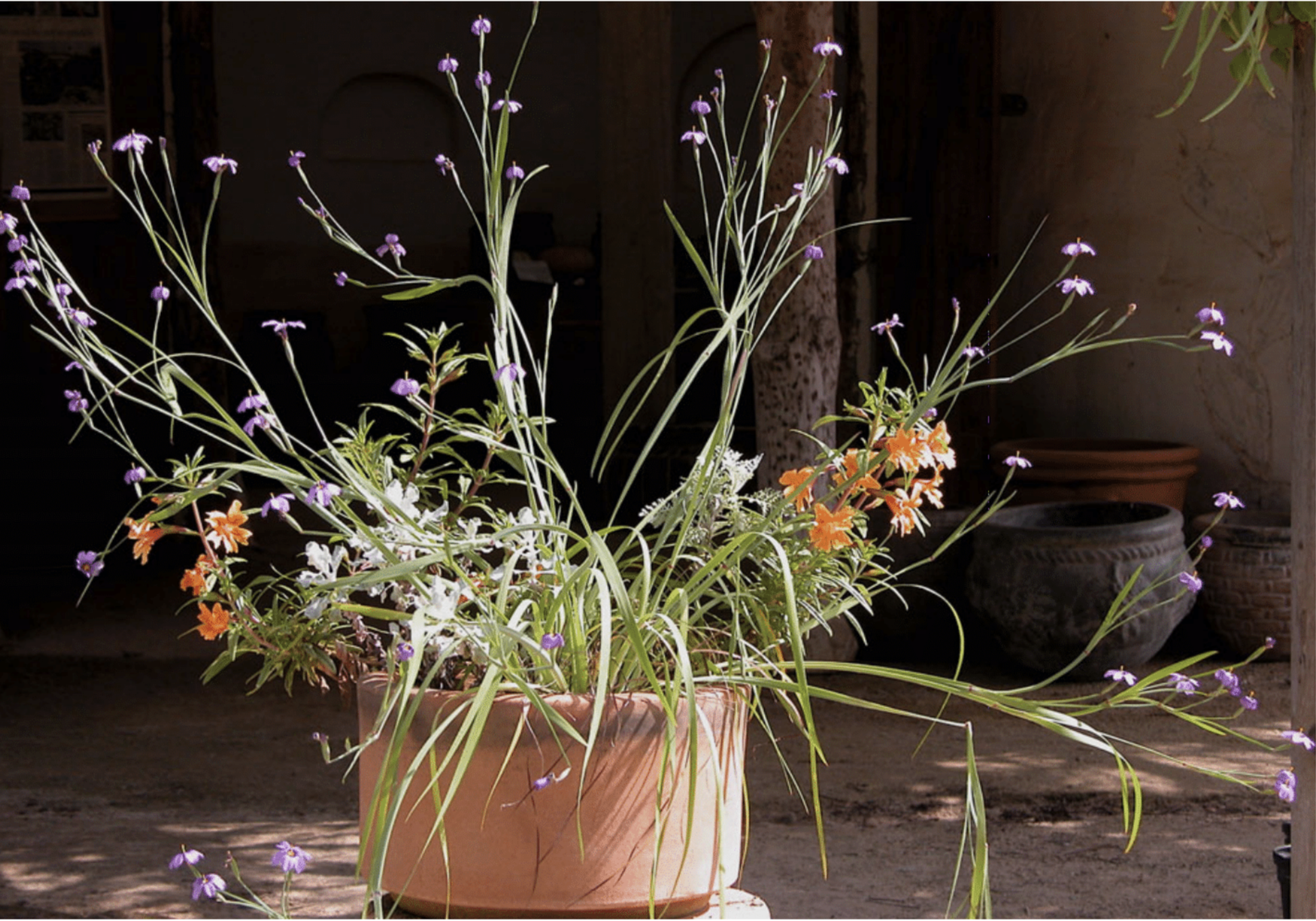
Materials
As a general rule, unglazed pots are better for native plants because they breathe and the potting medium does not stay waterlogged. Make sure the pot has adequate drain holes in the bottom. You can achieve the California “feel” by choosing rustic pots with natural colors and interesting shapes. If you will have several pots in the same area, they should look nice together, without being all the same. Establish a pot theme. Potting medium should be matched to the plants needs. For most native plants, a rich, well-drained medium is best. For desert plants, you may need to add sand or pumice. The medium should retain moisture after watering, and provide good aeration and reasonable fertility. Any proven commercial potting mix will suffice. You can add special ingredients, peat moss, decomposed granite, sand, pumice, or clays as needed to accommodate plants with unusual requirements.
Methods
If the drain holes are quite large, use hardware cloth to prevent the potting mix from spilling out. For small pots, window screen will work, but use caution with this material as it can plug up over time with accumulated salts and will not let water pass through. Situate the plants in a natural, artistic fashion. Firm the soil in the pot and around each plant, but do not pack it with too much force. You want the soil to be somewhat loose and friable. Make sure the top of each rootball is level with the top surface of the new planter. Do not fill the pot level with the rim. Leave a “shelf” between the rim of the pot and the soil surface to allow for proper watering , the larger the pot, the deeper the shelf. Water thoroughly when you finish. The planting should settle uniformly and water should stream out the drain holes. If soil washes out over the edge of the pot, it is possible that the shelf could have been left deeper. Adjust and replant as necessary.
Care and Feeding
Regardless of the exposure (sun or shade), the pot will need water when the soil is fairly dry to the touch, but not completely dry throughout. Depending on the size pot and its location (reflected glare, heat, wind, etc.), the plants may need water every two or three days, or as seldom as once a week. Water thoroughly with each irrigation so that plenty of water runs out the drain holes. This will prevent the build-up of salts in the soil. Apply an all-purpose organic plant food approximately every 3 to 4 months. Prune the plants anytime to provide healthy growth and prolong the blooming period. You can replace individual plants as necessary. When the plants are very crowded or start looking a bit haggard, it may be time to consider planting them out in the ground and starting over with new plants for the pot.
Enjoyment
Decorative potted plants in our living spaces can be traced back to ancient times in Babylonia, Egypt, China, and Japan. The new world tradition goes back to Spain, and originally from the Moorish gardens of the near east. The idea to make little natural scenes in pots using plants, rocks, and other items from nature has been brought to a fine art (saikei) in Japan, where it is a very structured, formal practice. The California patio is the perfect place for “mini ecosystems” in pots. Our southwest style walls, pavers, fountains, walkways, and benches will be nicely complemented by these small, informal representations of our natural landscape. By design, the California patio embodies a casual atmosphere. It is an outdoor room. By including natural plant combinations in decorative pots, you can expect visits from butterflies, pollinating insects, hummingbirds, who knows?, lizards, frogs and other fellow mortals. They will make your life a little more enjoyable as you view them with the knowledge that you have provided for them. If you add a water source for birds to drink and bathe in, a feed tray for bird seed, a couple hummingbird feeders, you will have made a “wildlife patio.” And it all started with the idea of wanting to see nature in miniature.
Examples
Southern California Wildlife Pot
- Comarostaphylis diversifolia (Summer holly)
- Monardella linoides viminea (San Diego willowy mint)
- Epilobium canum ssp. canum (California fuchsia)
Channel Islands Meditation
- Arctostaphylos catalinae (Catalina manzanita)
- Dudleya hassei (Catalina Live-Forever)
- Adenostema fasciculatum ‘Nicolas’ (Prostrate chamise)
- Nasellum lepida (Needle grass)
- Sisyrinchium bellum (Blue-eyed grass)
Baja Silver and Blue
- Solanum hindsianum (Mariola)
- Salvia chameadroides (Electric Blue sage)
- Dudleya brittonii (Chalk dudleya)
- Baileya multiradiata (Desert marigold)
Shady Woodland Pot
- Umbellularia californica (Bay tree)
- Woodwardia fimbriata (Giant chain-fern
- Fragaria californica (Woodland strawberry)
- Iris douglasiana (Douglas iris)
Little Piece of the Desert
- Simmondsia chinensis (Jojoba)
- Justicia californica (Chuparosa)
- Ambrosia pumila (San Diego ambrosia)
- Sphaeralcea species (Desert mallow)
- Salvia columbariae (Chia, from seed)